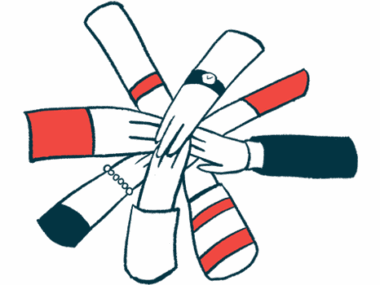Brineura Treatments Not Interrupted for UK Children During Pandemic
Written by |

During the COVID-19 pandemic in England, treatment with Brineura (cerliponase alfa) was considered “essential” for children with neuronal ceroid lipofuscinosis type 2 (CLN2) — also called late infantile Batten disease.
That resulted in no patients missing any doses of the therapy, which is designed to slow the progressive loss of walking ability, a study found.
However, support therapy services were widely compromised during the pandemic, and information on COVID-19 vulnerability, shielding, and testing was somewhat confusing for families. According to these families, the loss of additional therapies caused declines in the function and abilities of children with CLN2, though improvements were noted once services resumed.
These were the findings of a new study assessing the effects of the COVID-19 pandemic on Brineura availability in the U.K. The study involved half of the children who received Brineura at low or no cost through the country’s National Health Service (NHS) in late 2020.
“Our qualitative survey with the families of children with CLN2 disease describes marked impacts of the pandemic on access to support services and family wellbeing,” the researchers wrote.
The study, “Impact of the COVID-19 pandemic on access to the cerliponase alfa managed access agreement in England for CLN2 treatment,” was published in the Orphanet Journal of Rare Diseases.
CLN2 disease, also known as late-infantile Batten disease, is caused by lower-than-normal levels of the tripeptidyl peptidase 1 (TPP1) enzyme, which leads to seizures and a rapid decline in cognitive, language, motor, and visual function in children. Symptoms usually appear between 2 and 4 years of age.
BioMarin Pharmaceutical’s Brineura in 2017 became the first — and currently the only — approved treatment targeting the underlying cause of CLN2 disease in the U.S. and in Europe.
It became available to children in England on a limited basis in 2019 through the NHS.
An enzyme replacement therapy (ERT), Brineura works by delivering the missing TTP1 enzyme directly into the cerebrospinal fluid through a surgically implanted access device under the scalp. The cerebrospinal fluid is the liquid that surrounds the brain and spinal cord.
Previous clinical trial data showed that the therapy, administered for four-and-a-half hours every other week, slowed disease progression, particularly motor and language decline, in children with CLN2 disease.
In England, where five to six children are estimated to be diagnosed with the disease every year, the therapy is now available to eligible CLN2 patients under a five-year managed access agreement (MAA). After the five-year period, health authorities will review real-world data and update their guidance to indicate whether the therapy should be recommended for routine use on the NHS.
To continue to receive Brineura under this MAA, patients must attend infusion appointments every two weeks and undergo clinical assessments every six months.
Given that the COVID-19 pandemic disrupted health services throughout the world, including in England, the Batten Disease Family Association (BDFA), a U.K. charity, and the Rare Disease Research Partners evaluated the pandemic’s impact on Brineura access in the country.
At the time of the study, such access was limited to one specialized center, the Great Ormond Street Hospital (GOSH), in London. Notably, Brineura administration is now being set up at Manchester Children’s Hospital to ease travel pressure on families and make it easier for patients to get the therapy.
Families of 11 of the 21 CLN2 patients enrolled in the MAA at the time were included in the study, which also involved the two healthcare professionals responsible for delivering the therapy at GOSH.
In-depth, semi-structured, separate telephone interviews were conducted by members of the advocacy team at BDFA in late 2020, between Nov. 9 and Dec. 21. All interviews were recorded and transcribed, and collected data remained anonymous.
The included children ranged in age from 4.2 to 18.7 years, and had a mean age of 8.9. They had been receiving Brineura for a mean of 23.1 months (nearly two years), and up to 76 months (about six years). Patients had been enrolled in the MAA for a mean of 7.1 months, and up to one year.
The families lived an average of 210 km or about 130 miles from GOSH, with distances ranging from 7–398 km (4.3–247.3 miles).
Analyses of interview data showed that Brineura treatment via the MAA was designated an essential service by GOSH and that this service continued “as normal; but with extra safety precautions in place,” as reported by the healthcare professionals.
This is “a commendable achievement given reports of widespread disruptions to the care of children with rare diseases, including administration of ERT,” the researchers wrote.
With the support of “highly motivated families” who “considered that the benefits of the treatment outweighed the potential risk,” GOSH’s decision to sustain Brineura treatment despite COVID-19 restrictions resulted in no children missing any scheduled doses, the researchers said.
Despite extreme anxiety about traveling, visiting the hospital, and staying overnight in patient hotels, these families felt reassured by information from healthcare professionals — and by evidence of safety measures put in place by the hospital, as well as by their own COVID-19-related extra precautions.
Notably, while not all of the MAA-required regular clinical assessments were conducted, children could continue treatment under the special conditions for national health emergencies, such as the pandemic.
However, the families reported that support services — physical therapy and chiropractic, massage, and speech and language therapies — were widely compromised. This added extra stress and made them worry about potential deterioration of their children’s physical and cognitive condition.
According to interviewed families, their children’s function and abilities in fact declined without this additional support, although improvements were noted once services resumed.
While the real, long-term impact of support services disruption in these children remains to be determined, these services “should be considered ‘essential’ for those who rely on them to maintain their physical health, to ensure that patients do not deteriorate,” the researchers wrote.
“Support for patients and carers is also vital to help maintain patients’ and carers’ physical and mental health,” they added.
Another key challenge for these families was “understanding the vulnerability of their children with CLN2 disease” to COVID-19, making them uncertain “about whether to shield or isolate, particularly when they had school-age children or continued to work,” the authors wrote.
This was due to conflicting information in the media and blanket government advice about shielding and eligibility for government and NHS support.
Families also reported confusion about advice around COVID-19 testing: when it was necessary, who should be tested, and how to access tests. These issues were likely resolved with the implementation of widespread COVID-19 testing in England in late 2020, the researchers noted.
These findings “will help to understand the additional pressures on families during lockdown and will inform discussions with the National Health Service (NHS) and Government agencies about future provision during recurrence of the pandemic or similar situations in the future,” the investigators wrote.
Based on these insights, the team recommended that the risk and vulnerability of specific patient populations be determined as soon as possible, and by healthcare professionals with experience in caring for these patients.
Also, “advice for children with CLN2 disease should be specific and tailored, taking into account the family unit,” and “support therapies should be considered essential alongside [Brineura] treatment,” the authors wrote.
If support services have to be disrupted, “parents require support and guidance to help children at home, in order to mitigate potential deterioration in their condition,” they added.







